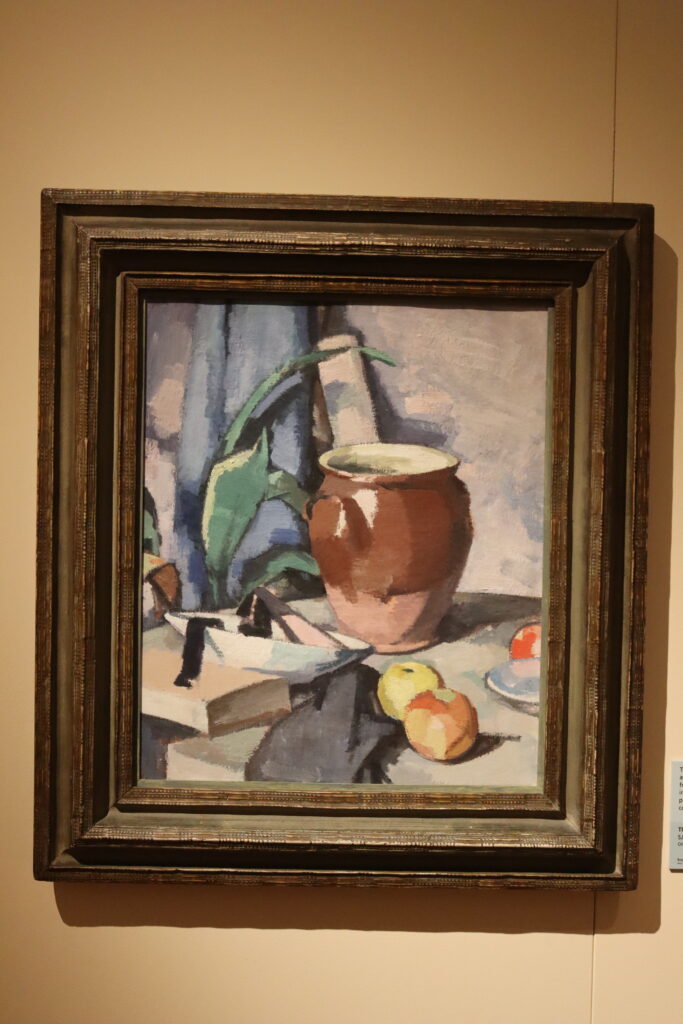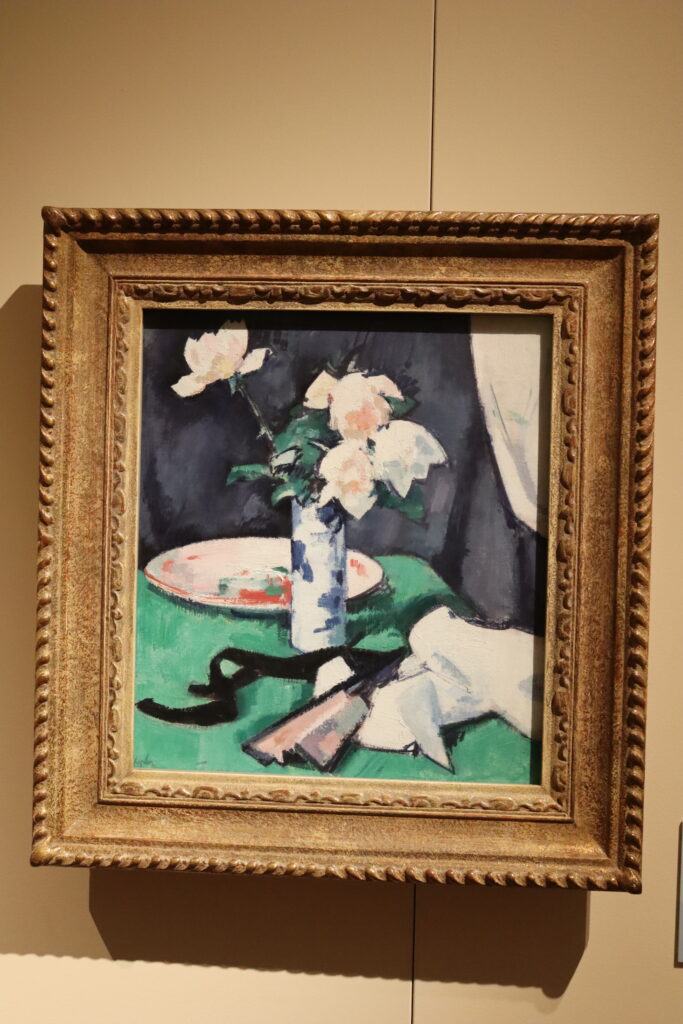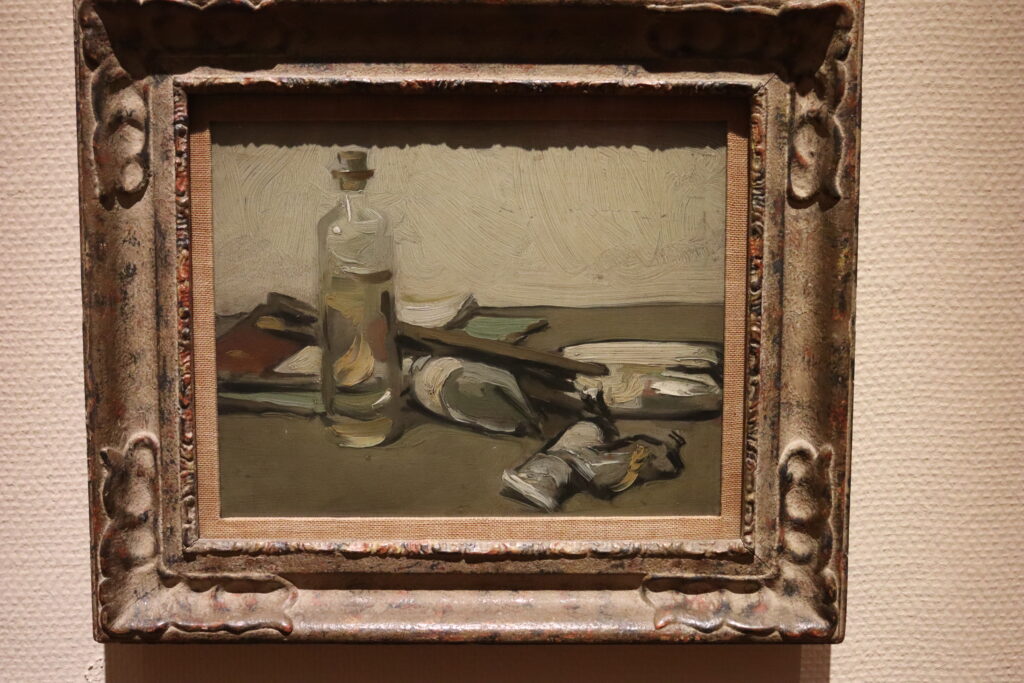
It was the still life paintings of Samuel Peploe on display in the Kelvingrove Art Gallery in Glasgow that promoted an inspiration about their composition. The works were part of the permanent exhibition of Scottish Colourists.
The view of Samuel Peploe was that each painting of still life promoted some sort of challenge to convey strands of ideas triggered by the various objects in a composition. In 1929 he wrote ‘There is so much in mere objects, flowers, leaves, jugs, what not – colour, forms, relations – I can never see the mystery coming to an end’. Thus while painting, the artist would be completely engrossed in seeking to achieve the shapes and forms, the contrasts, the colours and textures that communicated the artist’s perception of the relationships between the various items in the composition.
Another line of interpretation is that the observer of the still life image is sharing the cognitive perception of the artist at the time of its creation.

While we may not experience the same depth of creative flow as Samuel Peploe, it becomes clear that at the heart of the success of a still life painting is the quality of its composition rather than the physical painting of the image. Perhaps this is a basic teaching element in art schools – but then again it might not be.

With this focus in mind, potential suitable objects to be used in a new still life creation become actively sought after – charity shops at give away prices – antique shops another possible line of hopeful endeavour in a search for those ‘interesting’ items. The world is more full of objects than ever it was in the days of Samuel Peploe but we may not wish to labour to replicate them all enthusiastically in a still life painting. The natural world, however, remains an almost inexhaustible source of novelty shared willingly.